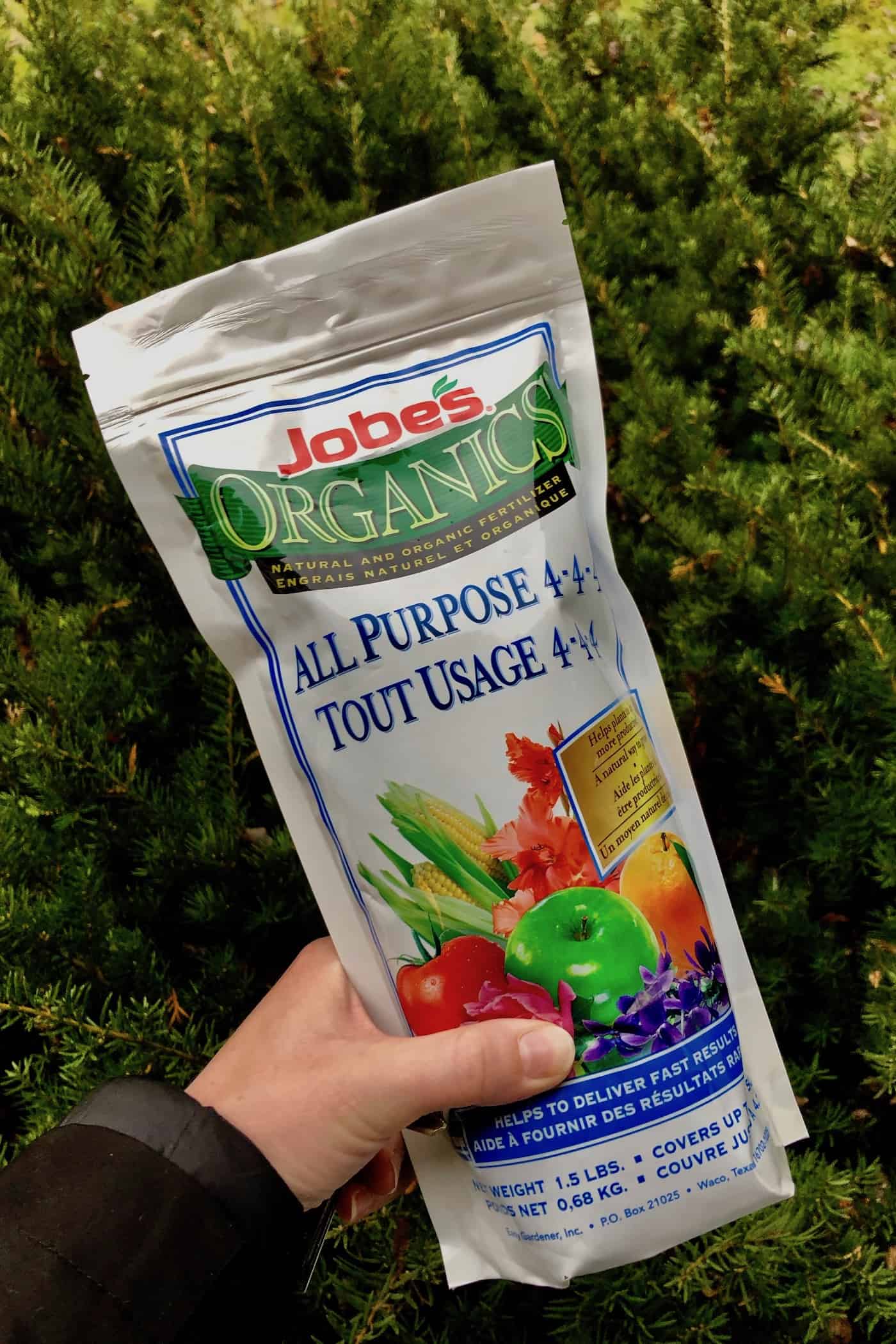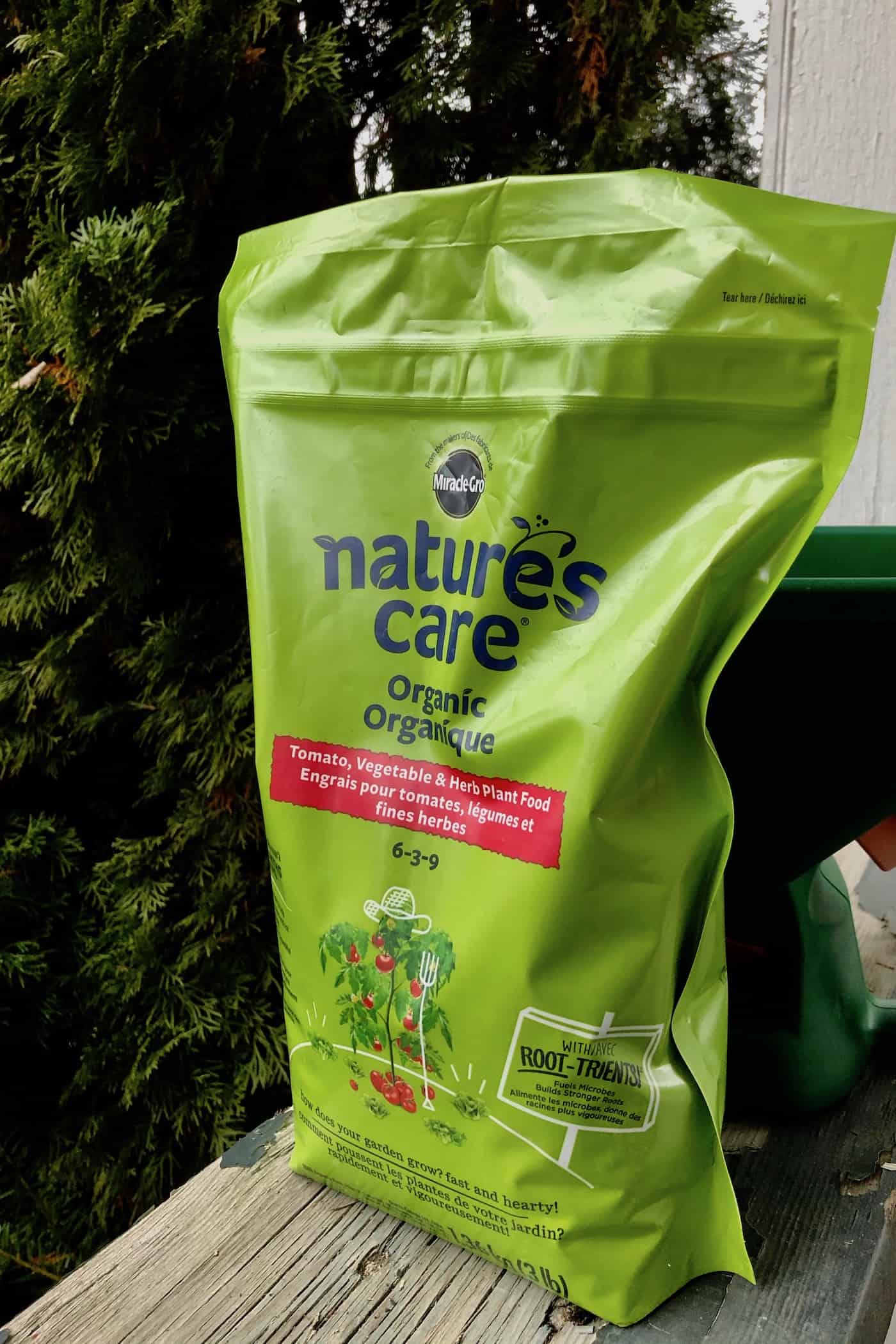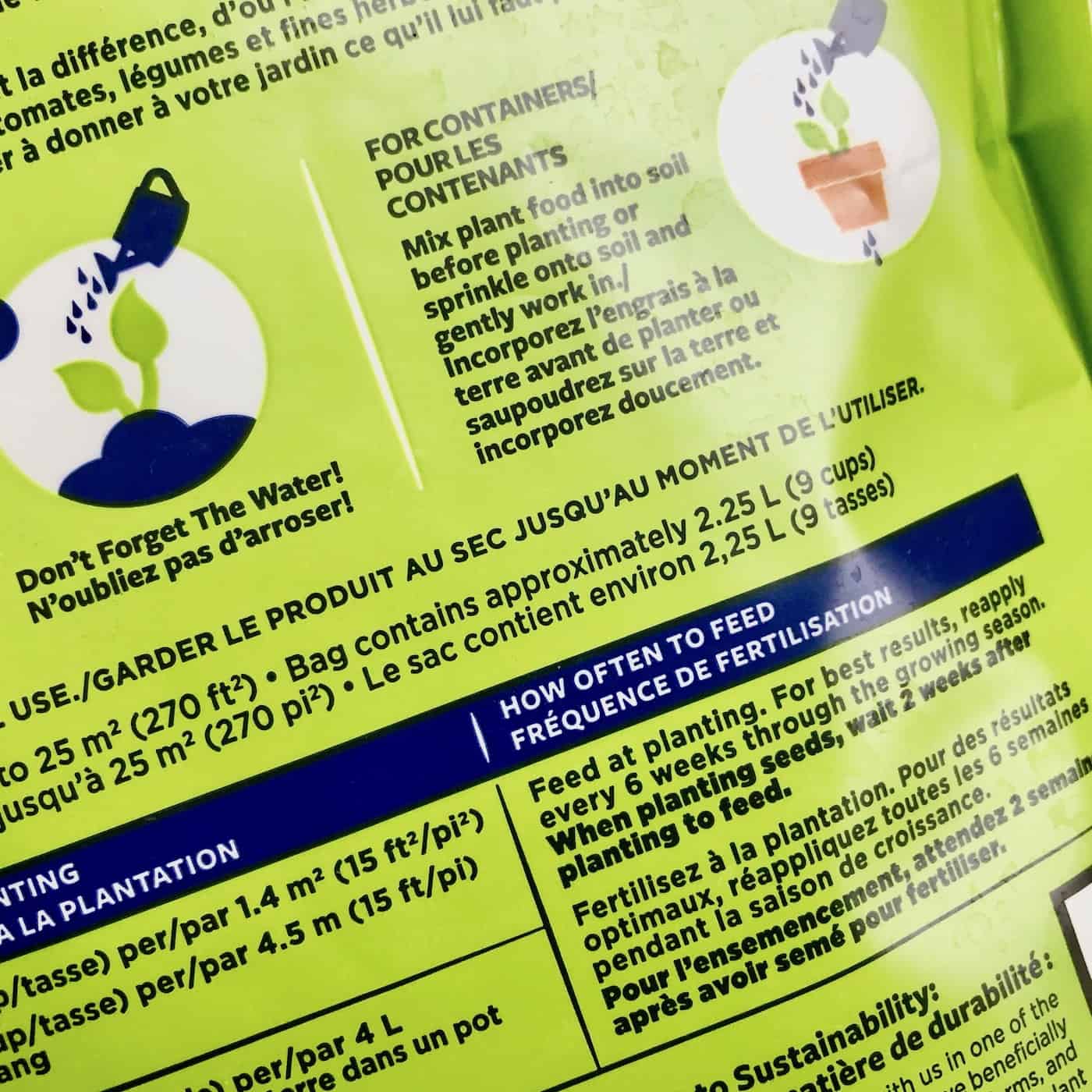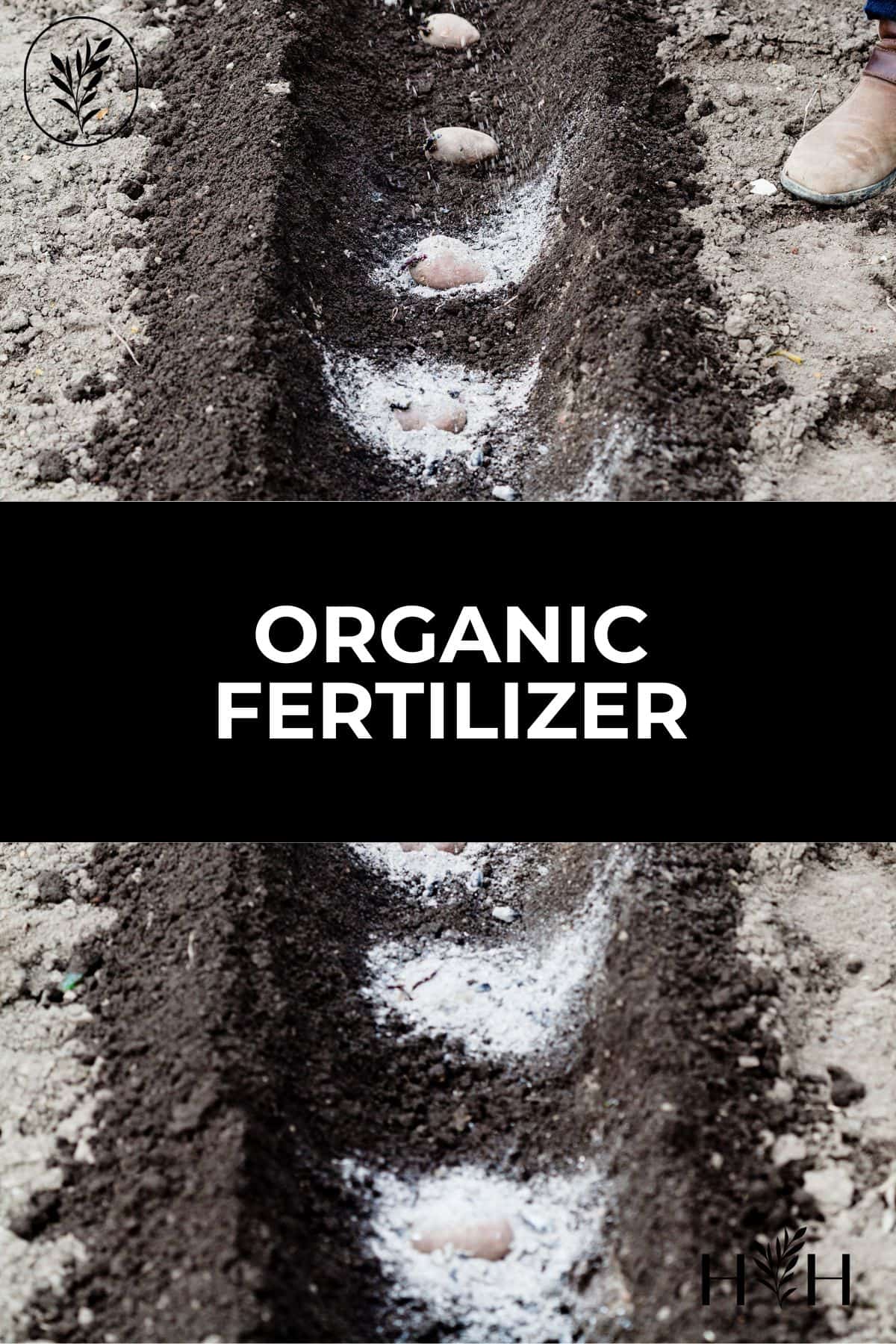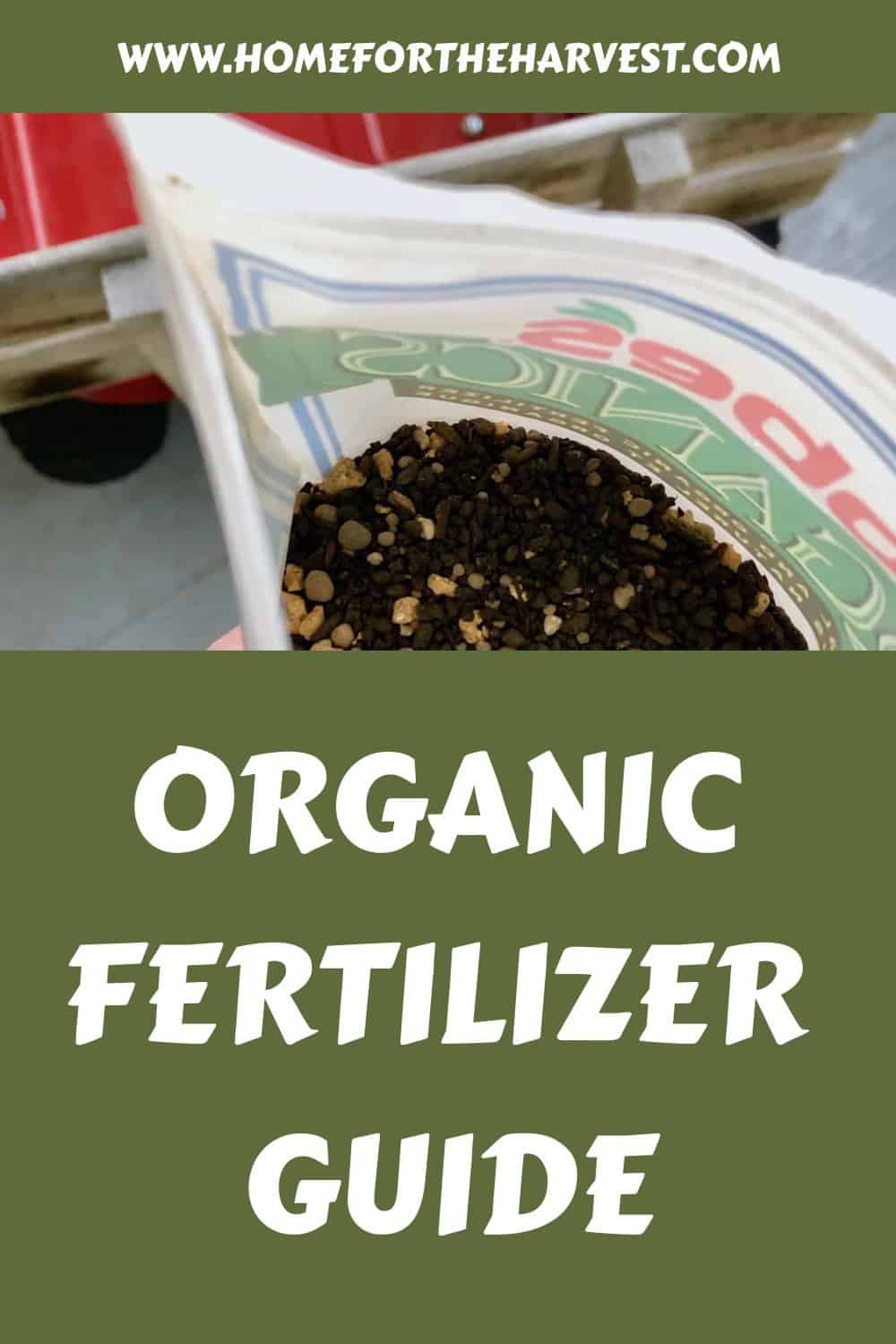Organic fertilizer, derived from plant or animal matter, enriches soil with nutrients like nitrogen, phosphorus, and potassium while improving soil structure, moisture retention, and beneficial microorganism growth.
A good organic fertilizer:
- provides at least one of the elements essential to plant growth;
- is made of ingredients which are found in nature, such as
- the remains of living things (plants, animals, fungi),
- the waste of living things (manure), or
- minerals found in the earth’s crust; and
- is certified as safe for organic use by a respected organization such as:
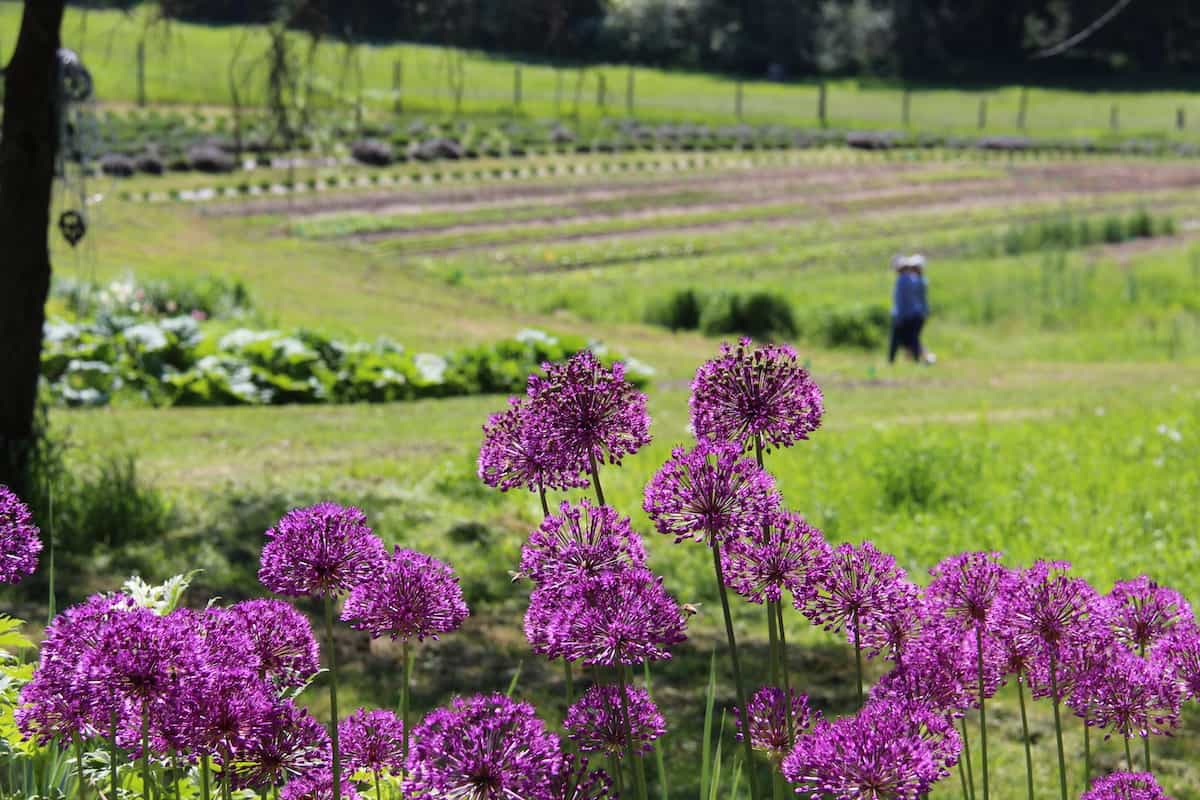
All about organic fertilizer
So, what is organic fertilizer? Let’s start with defining fertilizer in general. Then we can move on to understanding the organic part.
“Fertilizer” definition
Here is the definition of fertilizer from the highly-respected soil science text, The Nature and Properties of Soils:
“fertilizer: Any organic or inorganic material of natural or synthetic origin added to a soil to supply certain elements essential to the growth of plants.”
The Nature and Properties of Soils, by Nyle C. Brady and Ray R. Weil
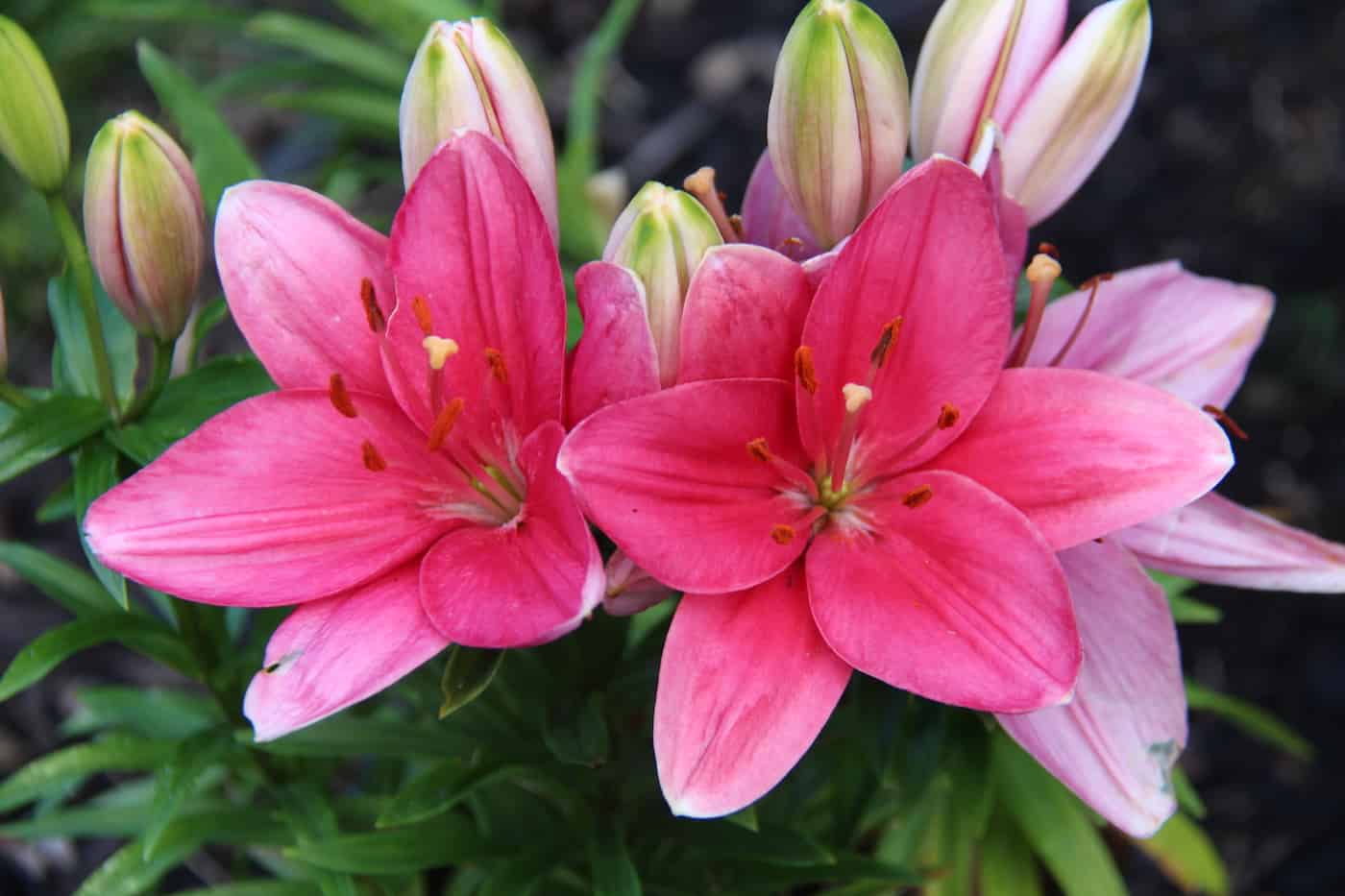
This definition of the word fertilizer is an excellent reference as it lays out exactly the categories of materials fertilizers come from and why these materials are added to soil that supports plant life. Specifically, it highlights that organic/inorganic is different than natural/synthetic. This is a key point to remember!

Organic chemistry vs. Organic gardening
A chemist considers the word “organic” to refer to a material that contains carbon. Living things like plants and animals contain carbon and are therefore “organic”. Materials that are “inorganic” do not contain carbon. Inanimate things like rocks and water are, therefore, “inorganic”.
A gardener considers the word “organic” to refer to a material that is approved as safe for organic gardening. The gardener’s common usage of the word IS NOT EXACTLY THE SAME as the chemists’ use of the word. In general, gardeners consider materials that are naturally derived to be safe for organic gardening while avoiding synthetically created materials.
It is possible for a material to be both inorganic and natural. Structures in our natural landscape, like rocks and water, are naturally occurring inorganic substances. For instance, an organic gardener would happily use phosphate rock dust as organic fertilizer in their garden. A chemist would say that phosphate rock is an “inorganic” material.
Rock phosphate is naturally sourced as it comes out of a quarry rather than a chemical plant. Phosphate Rock is OMRI-listed as “Allowed” as an organic crop fertilizer as it is a non-synthetic, unprocessed mined mineral. So, this particular fertilizer is both natural and inorganic!
“The entire living world depends on plants and their ability to assimilate inorganic substances from the environment they abut.”
Mineral Nutrition of Plants: Principles and Perspectives, by Emanuel Epstein and Arnold J. Bloom
Likewise, a material can be a carbon-containing organic material that is produced synthetically. Refined petroleum products such as synthetic motor oil are synthesized using hydrocarbon molecules. The methane (CH₄) in natural gas is a feedstock in the synthesis of man-made nitrogen fertilizers.
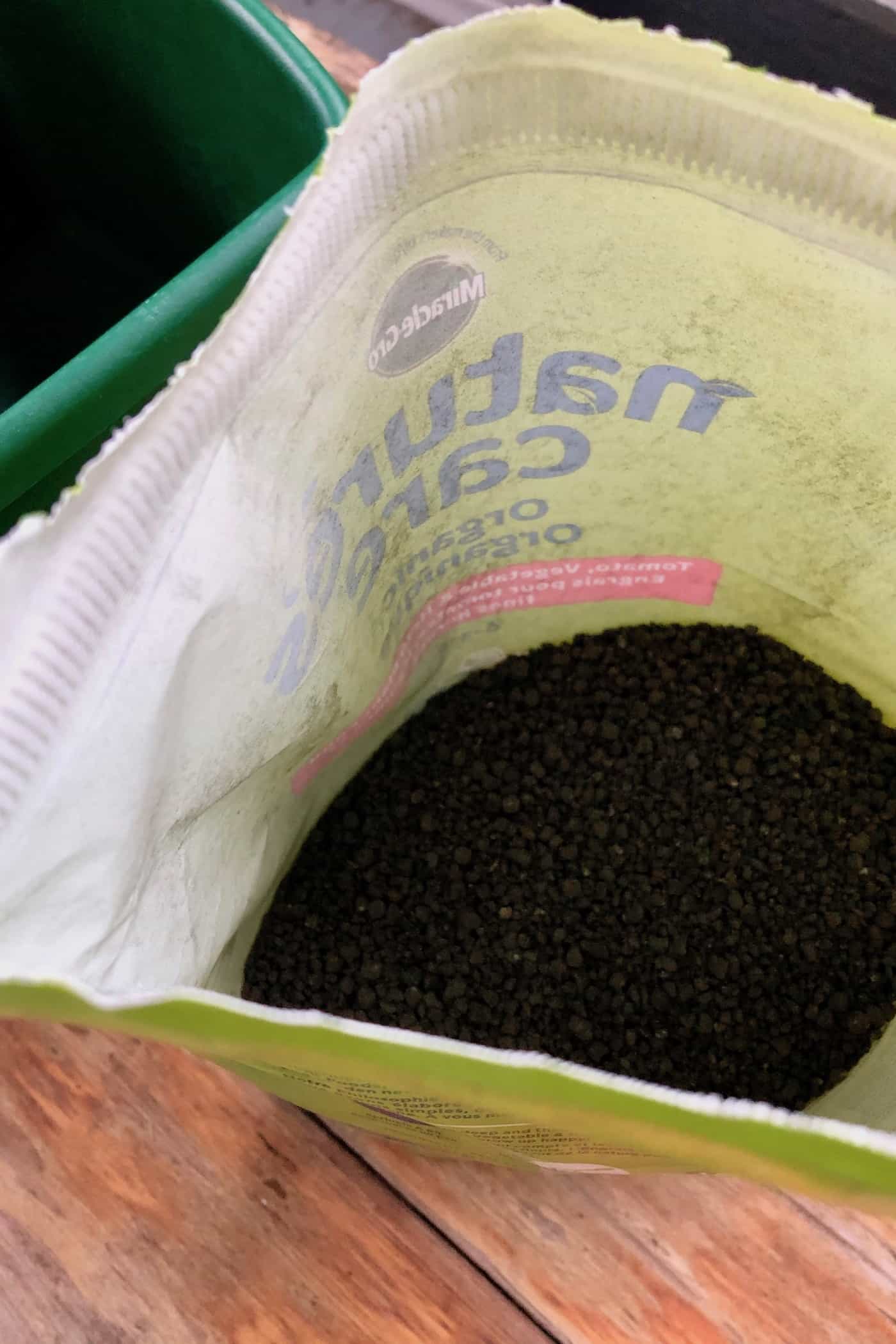
“Organic fertilizer” definition
Here is the definition of an organic fertilizer given in Rodale’s Illustrated Encyclopedia of Organic Gardening:
“Organic fertilizers are products of plant, animal, or mineral origin. The nutrients they contain are generally released slowly over a period of time as the fertilizer is broken down by microorganisms.”
Rodale’s Illustrated Encyclopedia of Organic Gardening, Edited by Pauline Pears.
Rodale also advises buying organic fertilizer products that have some sort of organic approval. Commonly accepted types of approvals for organic gardening products include OMRI-Listed Products and CDFA Organic Input Materials.
So, the ingredients in organic fertilizers are nutrient-rich materials that are found in nature AND are approved for organic use by an organization such as OMRI or CDFA-OIM.
Here’s where things get really interesting. There is the odd synthetically produced material that is approved for use in organic gardening. For example, Epsom Salts are OMRI-Listed as “Allowed” for organic use in certain instances. The OMRI entry for Epsom salts as a generic material specifically includes Epsom salts of both synthetic and non-synthetic origin. Synthetically-produced Epsom salt products, however, do have restrictions. For instance, Giles Magriculture Epsom Salt Fertilizer has the restriction that it only “may be used as a plant or soil amendment if soil deficiency of magnesium is documented by testing.”
Further Reading: The use of Epsom salt as a plant fertilizer is fascinating and full of surprises! Here is a detailed article all about using Epsom salt for plants.
So, are all rules meant to be broken? When in doubt, look at a product package for an OMRI-Listed logo or a CDFA-OIM logo. If the package isn’t handy, look up the product online to see if it’s been approved by a trusted organization. For general organic fertilizer ideas, keep reading this article! There are lots of organic fertilizer ideas in the following sections.
Organic Fertilizer Ingredients
Organic fertilizers are derived from living things or from minerals mined from the earth. Their “natural” ingredients are either coming from a source on the tree of life or from a rock in the ground.
A single organic fertilizer product may contain minerals sourced from plants, fungi, algae, and various types of rock dust…with some bacteria thrown in alongside the minerals for good measure.
Many gardeners prefer to think of organic fertilizer ingredients in three distinct groups based on their source: rock-based, animal-based, and non-animal life-based. The lists below give examples of each of these three sources of nutrients for organic gardening.
Non-Animal Life-Based Nutrient Sources
- Alfalfa
- Algae
- Banana Peel
- Camelina Meal
- Cottonseed Meal
- Cover Crops
- Fermented Grains
- Grass Clippings
- Leaf Compost
- Legume Plant Matter
- Mixed Plant-Based Compost
- Molasses
- Mushroom Compost
- Seaweed
- Soybean Meal
- Wood Ash
Animal-Based Nutrient Sources
- Bat Guano
- Blood Meal
- Bone Meal
- Crab Meal
- Composted Manure
- Feather Meal
- Fish Emulsion
- Fish Meal
- Hair
- Hoof/Horn Meal
- Manure
- Shellfish Meal
Rock-Based Nutrient Sources
- Granite Rock Dust
- Greensand
- Kaolinite Clay
- Limestone Rock Dust
- Phosphate Rock Dust
- Sulphate of Potash Magnesia
Homemade compost is often a blend of these types of nutrient sources, although it can, of course, be made with a “limited diet.” Yes, there is such a thing as vegan compost!

Advantages of organic fertilizer vs. Synthetic chemical fertilizer
As with most choices, there are advantages and disadvantages to both organic fertilizer and synthetic chemical fertilizer. Here are the basic perceived advantages and disadvantages.
Table 1: General Advantages and Disadvantages of Organic Fertilizer and Synthetic Chemical Fertilizer
| Type | Advantages | Disadvantages |
|---|---|---|
| Organic Fertilizer | -Can be produced on a local scale -Supports soil health -Low groundwater pollution risk -Centuries of experience with the use -Low nutrient concentrations are less likely to “burn” plants -Safer for pets and kids -Over-fertilizing is unlikely -Slow-release nutrients last longer in the soil (fertilize less often) | -No guarantee of completely eco-friendly production -Requires dead things and/or mined rock -Expensive to buy -Not necessarily certified as organic -Low nutrient content means heavy, bulky packages (fewer nutrients per pound of product) -Requires soil microorganisms |
| Synthetic Chemical Fertilizer | -Low-cost -More likely to be in the vegan realm -High nutrient density for efficient transport -High nutrient content means even a little package can feed a lot of plants -Consistently available in exact ratios -Soluble nutrients are immediately available | -Energy-intensive to produce -Production is limited to specialized plants -High groundwater pollution risk -May “burn” plants due to high nutrient concentration -Easy to over-apply -Must be applied frequently |
There are clearly advantages and disadvantages to both natural and organic fertilizers and to synthetic chemical fertilizers. At this point, it’s also key to remember that plants will absorb nutrients from both natural fertilizers and synthetic fertilizers. They don’t care if they’re getting take-out or a home-cooked meal….as long as they’re being fed.
“It is important to realize that plants do not recognize the difference between organic and inorganic fertilizers. As long as these elements are supplied in adequate amounts it makes little difference to the plant if they are organic, inorganic, natural or synthetic. Their tiny root hairs can absorb only nutrients that have been broken down into inorganic, water-soluble forms. It makes no difference to your tomato plant if the atom of nitrogen it is absorbing has come from a compost pile or a fertilizer factory. There are, however, advantages and disadvantages to each form of fertilizer, organic and inorganic.”
Using Fertilizers, University of Saskatchewan
Wow. Our plants literally do not care whether we buy them fancy organic plant food or generic synthetic chemical crystals. Not what I was expecting!
Reality check: Our plants aren’t looking for the OMRI logo
The plants in our garden do not care whether their nutrients are naturally derived or synthetically produced. I often think of this quote from Dr. Linda Chalker-Scott:
“”Chemical” is not intrinsically bad and “organic” is not automatically
Martha Stewart Gets Fact-Checked by Hort Professor, By Susan Harris
safe. This is an emotion-based argument and inspires fear rather than
thoughtful discussion. When someone parrots this mantra, I can’t take
them seriously.”
And she’s right. We all know deep down that such sweeping generalizations are rarely rooted in fact. Everyone is a critic! Why all this fuss about using organic fertilizer? What are we all supposed to do!?
Mostly… why is organic fertilizer considered better than synthetic products for so many experienced gardeners? Why are so many gardeners moving to organic fertilizers instead of synthetic ones? The answer has a lot to do with risk vs. reward.
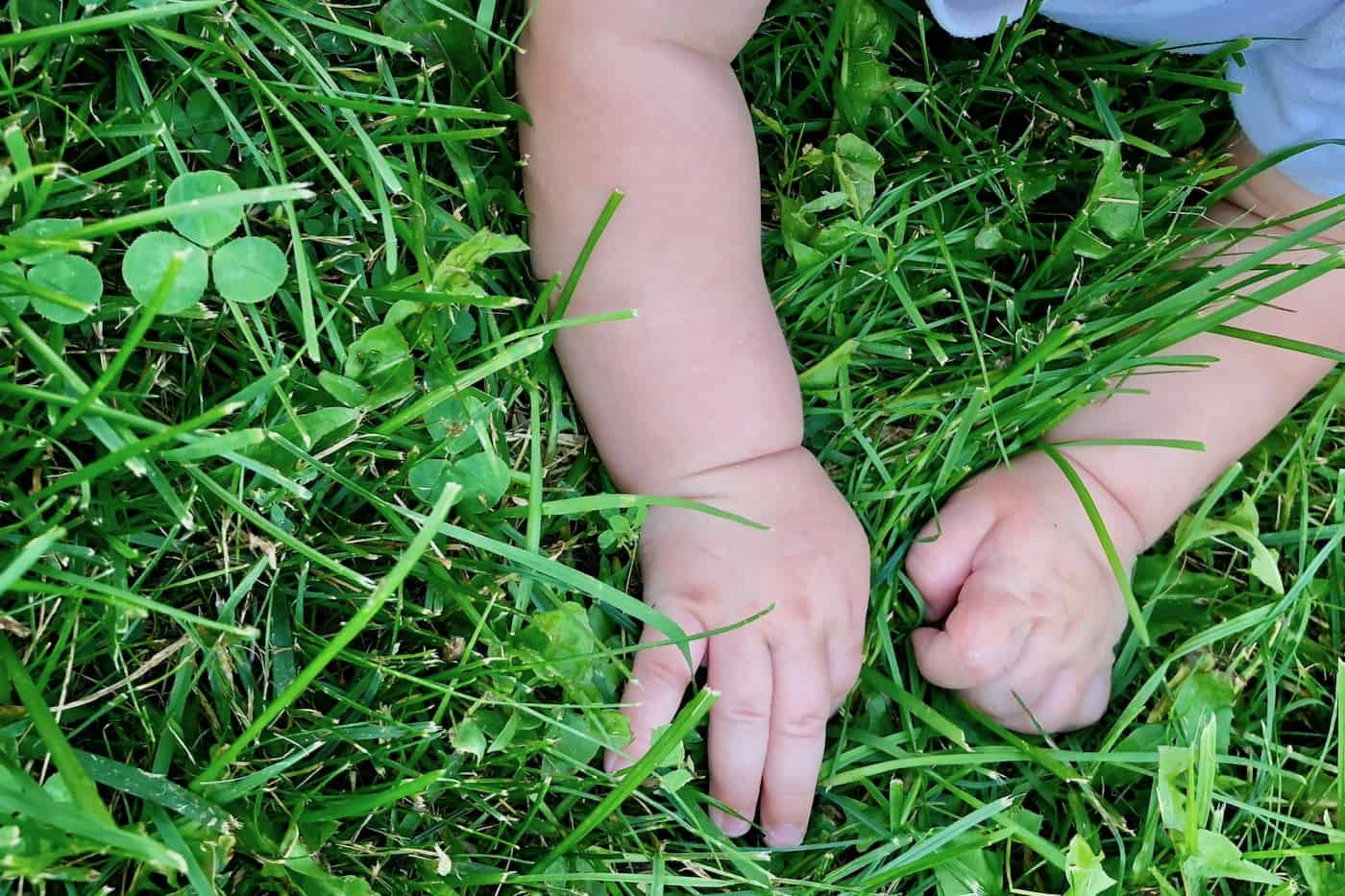
Why is organic fertilizer better?
The simple answer to why organic fertilizer is better than synthetic is that organic fertilizer gives greater rewards at a lower environmental risk. This matters if you are concerned about kids, pets, wildlife, soil organisms, and the wider eco-system in general.
Organic fertilizer provides bulk organic matter, which builds the soil and feeds the soil food web. The organic matter is what gives the soil structure. It allows it to hold fresh air, water, and house beneficial organisms. There is a reason that plants grow better in potting soil than in concrete! Organic fertilizer is also is much more likely to provide secondary macronutrients and micronutrients,
“One of the keys to success will be creating a program that maintains and increases soil organic matter. Organic matter (OM) is the living component of the soil. It consists of plant and animal residues in various stages of decomposition and is an important storage site for nutrients. By increasing soil OM, you will also increase soil water storage, decrease runoff, erosion, and leaching as well as improve soil structure and porosity.”
Soil – Organic Nutrient Sources, Utah State University
Synthetic formulas tend to focus only on NPK. Some have a bit of calcium, magnesium, or iron, but they’re unlikely to contain a majority of the micronutrients essential to plant growth. There are also concerns that the pure nutrient form of synthetic fertilizers fundamentally changes the way the soil eco-system functions.
“Chemically, the implication of using synthetic fertilizers is clear. They can tie up essential nutrients, quickly change the pH, and adversely affect osmosis because of their high concentrations. The ultimate repercussions are symptoms of poorly nourished plants.”
Teaming with Nutrients, Jeff Lowenfels
Synthetic fertilizers generally contain a much higher percentage of NPK nutrient levels than natural fertilizers. The beneficial organisms in the soil, such as the lovely earthworm, are not happy in soil exposed to such concentrated amounts of chemicals. Concentrated chemicals really do affect the little ecosystem that exists in the top foot of the ground.
Concentrated nutrients create a soil imbalance
So while synthetic fertilizers are certainly more concentrated and thus have higher NPK ratios, this high concentration is not necessarily a good thing. The goal should be to add the correct amount of a given nutrient to correct a known deficiency. Simply overwhelming the soil with a broad nutrient bath is not going to give your plants “a leg up”. What it WILL do is pollute the local groundwater.
“Soil nutrient levels that exceed crop needs can be as bad as deficient levels. High soil nutrient levels might not only represent an economic loss but may also result in crop, animal, or environmental problems.”
Using Organic Nutrient Sources, PennState Extension, by Elsa Sanchez and Tom L. Richard.
Fertilizer as an environmental pollutant
Fertilizer itself can also be an environmental pollutant. Excessive fertilizer use is causing severe pollution in many places around the world. The worst two offenders are the N and P in NPK: nitrogen and phosphorus. If you’re unfamiliar with pollution from fertilizers (both natural and synthetic), do a quick bit of research on “eutrophication from plant fertilizer”, or something to that effect. Or go visit a lake with an algae bloom.
“Gardeners use three times the nitrogen per acre that farmers use. This results in excess nutrients that are washed into waterways and harm aquatic ecosystems.”
Teaming with Nutrients, Jeff Lowenfels
The basic gist of fertilizer pollution is that it adds an unnatural amount of nutrients into local waterways. Because there is a smorgasbord of nutrients, the growth of phytoplankton and algae goes crazy! This throws things off in the underwater ecosystem. The nice local fish get kicked out of their neighborhood. Channels clog up with aquatic weeds. Drinking water can taste a bit off. Beaches get closed due to algae or weeds.
Fertilizer pollution is a classic example of “too much of a good thing”. Would you feed a toddler an entire chocolate cake? Too much fertilizer not only pollutes the wider landscape, but it’s likely also impacting your precious garden plants. You’re not giving your garden an “extra boost” by over-fertilizing. Just don’t do it.
Excessive amounts of nitrogen can reduce production and quality, and increase insect and disease problems. Applying phosphorus when it is not needed can increase chlorosis.
Fertilizing the Vegetable Garden, Colorado State University
“Phosphorus added in excessive amounts contributes to pollution of aquatic systems. In the landscape, it also reduces the ability of mycorrhizal associations to develop with plant roots and can inhibit root uptake of iron and manganese, two other required nutrients.”
Gardening with Native Plants of the Pacific Northwest, by Arthur R. Kruckeberg and Linda Chalker-Scott
Production of synthetic chemicals is also very energy-intensive in comparison to say, composting. And there’s the whole matter of transporting the fertilizer from where it’s made to where it’s used. The production of synthetic fertilizer chemicals is not exactly eco-friendly:
“More than 5 percent of the world’s natural gas production is used to make these [nitrogen-based synthetic] fertilizers. Less than 100 years ago, all of the plant available nitrogen in the world, except for a tiny bit fixed during electrical storms, was produced by microbes.”
Teaming with Nutrients, Jeff Lowenfels
“The manufacture and application of fertilizers consumes over a third of the energy expended for agriculture in developed countries (McLaughlin et al. 2000). Clearly, pressures to minimize fertilizer use will drive this technology to become more sophisticated.”
Mineral Nutrition of Plants: Principles and Perspectives, by Emanuel Epstein and Arnold J. Bloom
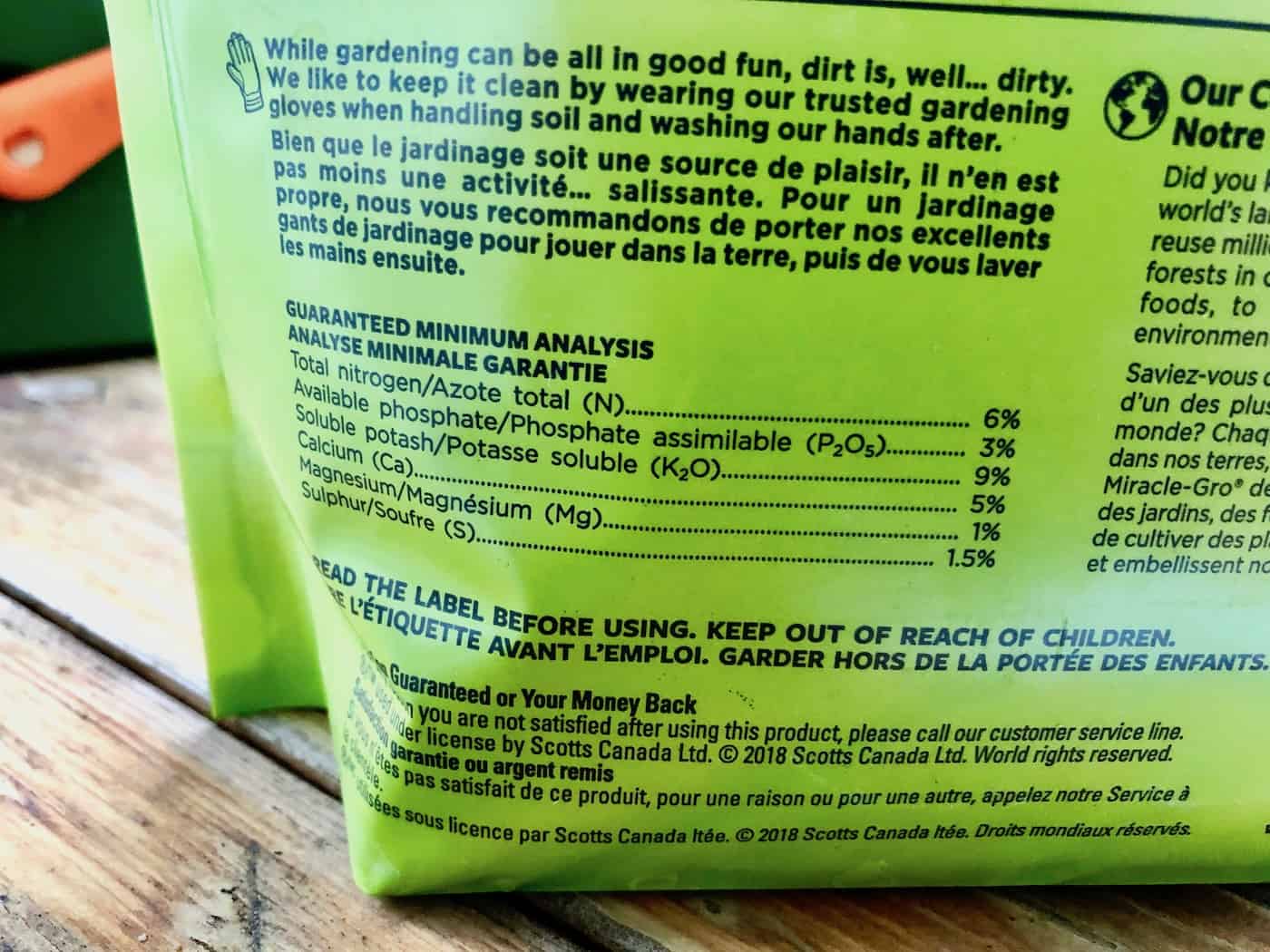
What do plants need to grow?
Up to this point, we have discussed where fertilizer comes from and what it’s made of. Now it’s time to get into the WHY. Why do we even use fertilizer? Do plants need fertilizer? What do plants actually need to grow?
Plants, like us, need a body to live in and energy to run that body. Living things grow and thrive on specific nutrients that support us at a cellular level. Plant cells are made up of specific materials and the energy that those cells run on is also made up of specific materials.
Living things require both organic compounds and inorganic compounds. Animals like us have to consume both types of compounds to live. Plants are unique in that they can make their own organic compounds (read: food) out of thin air! But they still need to find inorganic compounds to live.
How plants get energy
Plants can create their own carbon-containing organic compounds using photosynthesis. The plants use water, light, and carbon dioxide to produce sugar molecules and oxygen (thank you plants – we need that stuff!). Plants can therefore make their own energy.
“Plants are freakin’ great because they have this magical wizard power that allows them to take carbon dioxide out of the air and convert it into wonderful, fresh, pure oxygen for us to breathe. They’re also way cooler than us because unlike us, and every other animal on the planet, they don’t require all kinds of hot pockets and fancy coffee drinks to keep them going. The only things plants need to make themselves a delicious feast is sunlight and water. Just sunlight and water.”
Plant Cells, Crash Course: Biology, Khan Academy, by Hank Green.
Want to learn more about photosynthesis? Check this post out!
What plants need to build their cells
But energy isn’t much good on its own. Plants also need a body to live in. Plants need to consume inorganic compounds known as minerals to build their physical structure.
Minerals are chemical elements that can be found on the periodic table. Naturally occurring minerals can be mined out of the earth, or they can be “synthesized” in a laboratory. All fertilizers are formulated to add mineral nutrients to the soil that plants require to grow and thrive.
Eco-friendly fertilizers stick to naturally occurring mineral sources, while conventional fertilizers are made of minerals that were synthesized in processing plants by chemists. But as we discussed earlier, plant cells don’t really care where their minerals come from. Plants will use minerals whether they come from a mine, a farm, a fishery, or a chemical plant.
So that’s cool. Plants need minerals, and they can get those minerals from dead things or from rocks. But what ARE those minerals specifically? And most importantly for organic gardeners – where can we get those lovely minerals for our plants?
Mineral nutrition for plants
Plant life requires 17 essential minerals. They need these minerals to build their cells and grow. Here are the nutrients that plants get from the soil they live in. Mineral nutrients are generally sorted into three categories based on the relative amounts required:
Main Macronutrients
- Nitrogen (N)
- Phosphorus (P)
- Potassium (K)
Secondary Macronutrients
- Calcium
- Magnesium
- Sulfur
Micronutrients
- Aluminum
- Boron
- Chlorine
- Cobalt
- Copper
- Iron
- Manganese
- Molybdenum
- Nickel
- Sodium
- Zinc
“If one of the chemical elements essential to a plant is available in insufficient amounts or in chemical combinations that are poorly absorbed, the deficiency of this element will bring about derangements in plant metabolic processes. Eventually these metabolic disturbances manifest themselves in the development of visible symptoms such as stunted growth, yellowing or purpling of leaves, or other abnormalities.”
Mineral Nutrition of Plants: Principles and Perspectives, by Emanuel Epstein and Arnold J. Bloom
It is completely possible (and perhaps probable) that unadulterated garden soil contains all of these nutrients in sufficient quantities and in the proper ratios to support plant life. The only reason to add organic fertilizer would be if one or more of the nutrients was known to be deficient. Nitrogen is the most commonly deficient garden soil mineral.
“You may be surprised to see that the only deficient nutrient in your soil is nitrogen; in fact, urban soils usually contain adequate levels of nearly all nutrients except nitrogen.”
Gardening with Native Plants of the Pacific Northwest, by Arthur R. Kruckeberg & Linda Chalker-Scott
So, start with a soil test! Without a soil test, assume all nutrients are present. Here is a great article from PennState Extension about using organic nutrient sources to correct nutrient deficiencies identified in soil analysis.
The building blocks of plants
We have just covered the fact that plants need to consume inorganic compounds known as minerals to build their physical structure. And we also know which minerals they need. Let’s do a little review of high school biology to figure out how plants use nutrients to grow.
Plants are made of plant cells. Each plant cell has walls, a “brain”, and various little structures inside it that each has a specific job. Plants build these cells with molecules. There are four types of biological macromolecules in living things:
- Carbohydrates
- Made up of simple sugars – like glucose
- Proteins
- Made up of amino acids
- Lipids
- Made up of glycerol and fatty acid(s)
- Nucleic Acid
- Made up of nucleotides
This weirdly-interesting video will remind you about biological molecules. Honestly, so good.
Each of the big molecules is made up of smaller molecules. The smaller “building block” molecules are listed above and include simple sugars and amino acids. These smaller molecules are made up of atoms – Atoms including nitrogen atoms and phosphorus atoms and potassium atoms, et cetera. AKA the nutrients in plant fertilizer.
“Plants are what they eat. If you want the best possible plant, you need to feed it properly.”
Teaming with Nutrients, Jeff Lowenfels
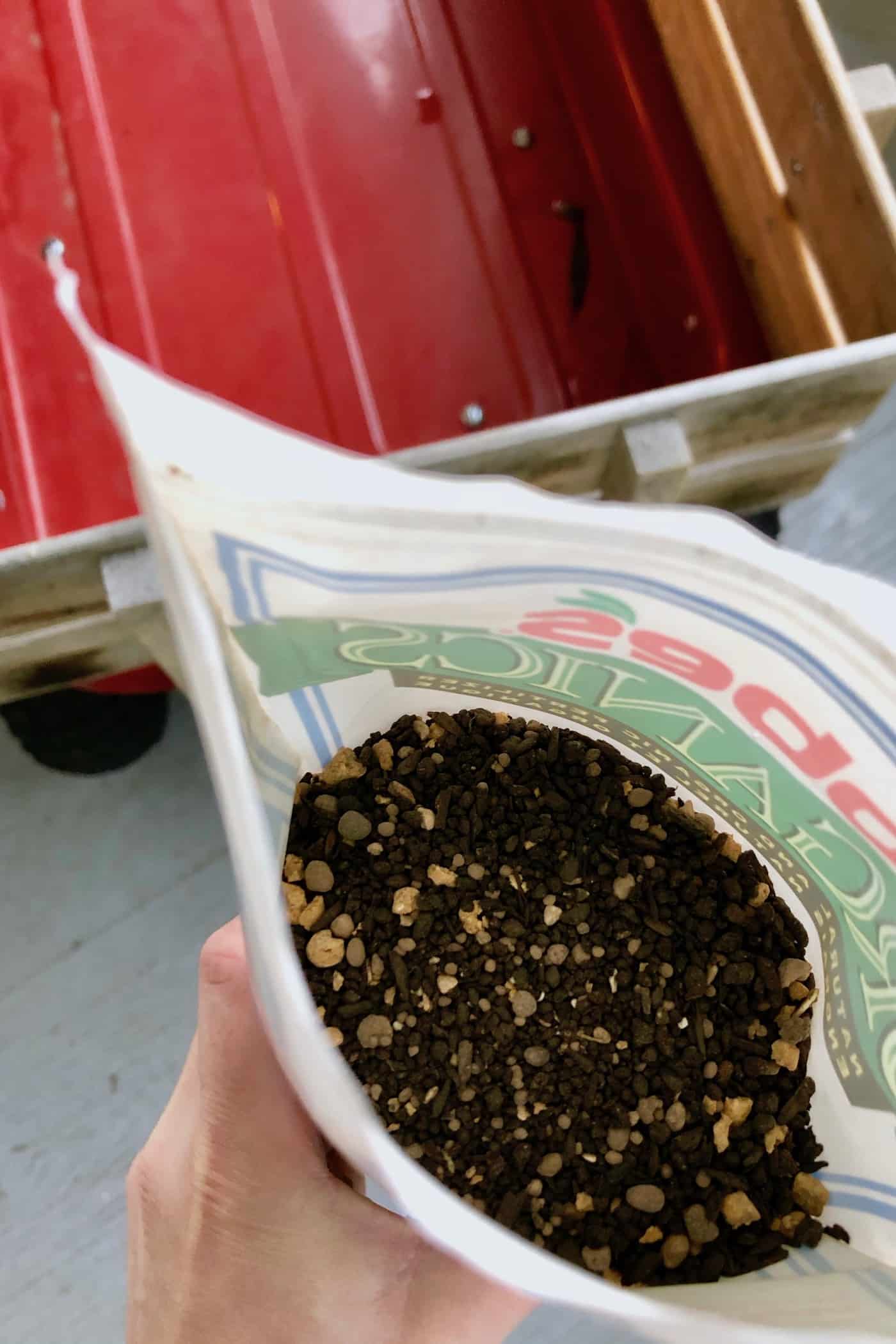
Mineral nutrient sources for organic fertilizer
Here are common organic sources for each main macronutrient:
Nitrogen (N) – Organic Sources
- Alfalfa
- Bat Guano
- Blood Meal
- Cottonseed Meal
- Crab Meal
- Feather Meal
- Fish Emulsion
- Fish Meal
- Hair
- Hoof/Horn Meal
- Manure – Poultry
- Shellfish Meal
- Soybean Meal
Phosphorus (P) – Organic Sources
- Bat Guano
- Bone Meal
- Hair
- Mushroom Compost
- Phosphate Rock Dust
Potassium (K) – Organic Sources
- Banana Peel
- Granite Rock Dust
- Greensand
- Kaolinite Clay
- Kelp
- Sulphate of Potash
- Wood Ash
While each of these natural materials can be used as a source for one specific nutrient, the material may also contain some amount of other nutrients. Because these are naturally occurring materials, they generally have a mix of many nutrients, including macronutrients and micronutrients.
Approximate NPK values of common organic nutrient sources
Here are the NPK ratios of some common ingredients of organic fertilizers.
Table 2: Approximate NPK Values* of Common Organic Nutrient Sources
| Source Material | Nitrogen (%N) | Phosphorus (%P) | Potassium (%K) |
| Alfalfa | 2.5 | 0.5 | 2 |
| Bat Guano | 5.5 to 8 | 4 to 8.6 | 1.5 |
| Blood Meal | 12 | 1.5 | 0.6 |
| Bone Meal | 2 to 6 | 15 to 27 | 0 |
| Clover | 2 | 0.5 | 2 |
| Cocoa Shell | 2.5 | 1 | 2.5 |
| Compost | 1.5 to 3.5 | 0.5 to 1 | 1 to 2 |
| Cottonseed Meal | 4 to 6 | 2.5 to 3 | 1.6 |
| Crab Meal | 10 | 0.25 | 0.05 |
| Feather Meal | 15 | 0 | 0 |
| Fish Emulsion | 5 | 1 | 1 |
| Fish Meal | 10 | 4 to 6 | 0 |
| Granite Dust | 0 | 0 | 3 to 6 |
| Greensand | 0 | 1.5 | 5 |
| Hair | 12 | 26 | 0 |
| Hoof/Horn Meal | 9 to 14 | 1.5 to 2 | 0 |
| Kaolinite Clay | 0 | 0 | 12 |
| Kelp | 1 | 0.5 | 4 to 13 |
| Manure – Cow | 0.5 to 1.5 | 0.2 to 0.7 | 0.5 to 2 |
| Manure – Horse | 0.7 to 1.5 | 0.2 to 0.7 | 0.6 to 0.8 |
| Manure – Poultry | 1.5 to 6 | 1 to 4 | 0.5 to 3 |
| Mushroom Compost | 0.5 to 0.8 | 40 to 55 | 0.5 to 0.8 |
| Phosphate Rock | 0 | 17 to 30 | 0 |
| Ryegrass | 1 | 0 | 1 |
| Soybean Meal | 6.5 | 1.5 | 2.4 |
| Sulfate of Potash Magnesia | 0 | 0 | 22 |
| Wood Ash | 0 | 5 | 3 to 7 |
| Worm Castings | 1.5 | 2.5 | 1.3 |
*NPK Values in Table 1 are adapted from LC437 – Nitrogen-Phosphorus-Potassium Values of Organic Fertilizers, by Ross Penhallegon, Oregon State University Extension Service.
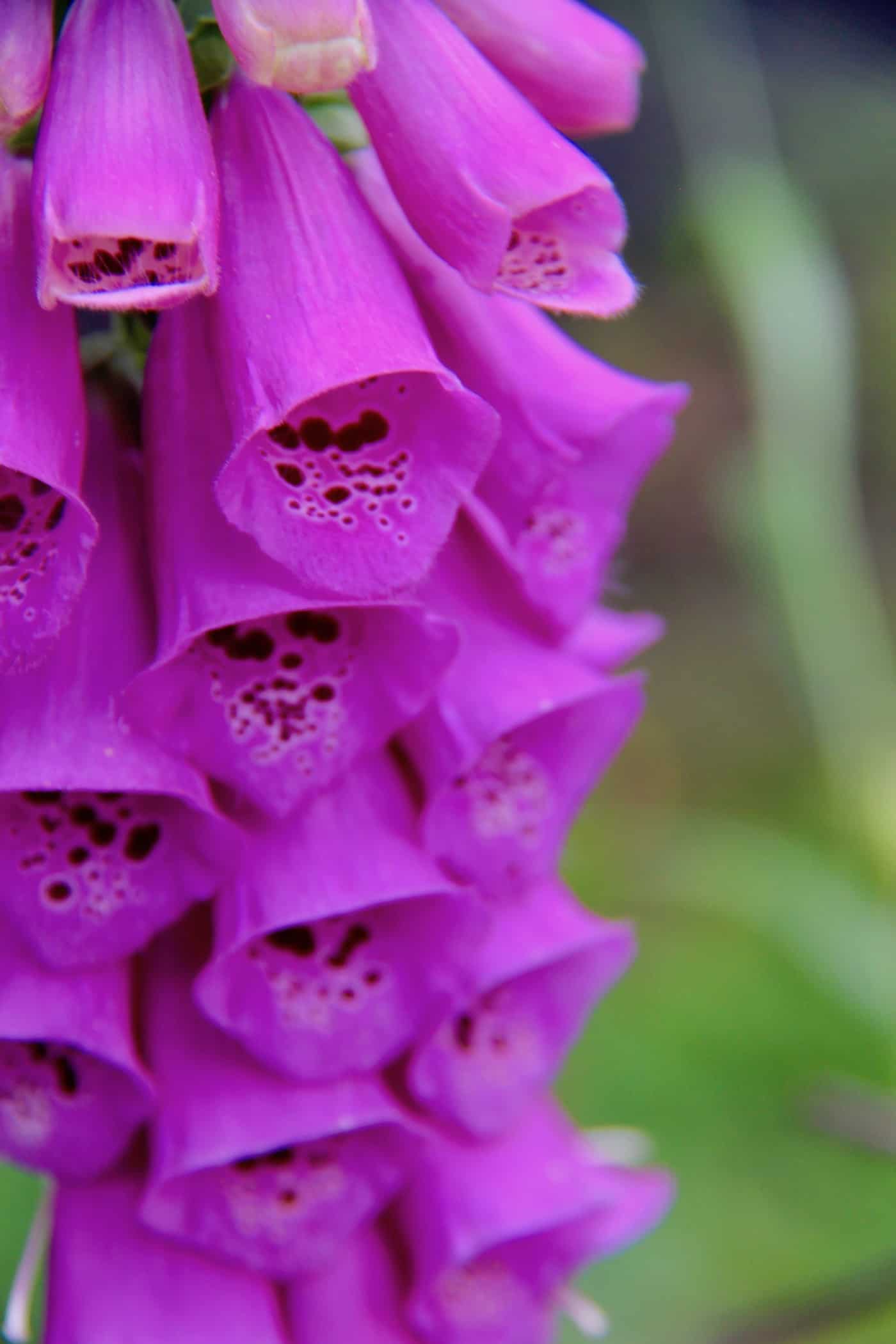
Nutrient sourcing for organic fertilizer
So where is all this stuff that contains these nutrients coming from? It’s certainly a question worth asking. Whatever organic fertilizer you choose, take the time to investigate how its ingredients are sourced.
Was the mineral mined responsibly in a jurisdiction with adequate worker protections and environmental oversight? How do you personally feel about animal byproducts from slaughterhouses? Is it okay to take nutrient sources from their native environments and re-assign them to our yards? Everyone is going to answer these questions differently. Whatever your opinion, it’s worth a thought before you choose an organic fertilizer.
Here are some things to look out for:
- There is a wide range of ethical practices in farming. Are any animal byproducts coming from an industrial factory farm, or are they produced by a local Salatin-style responsible farmer? Are fish products coming from a sustainable fishery? Expect it will be hard to get to the bottom of these questions.
- The same goes for mining. Do you know where in the world the minerals came from? Does that area have a decent emissions and mine reclamation reputation? What about the actual mine quarry?
- Just because it’s not mined or farmed doesn’t make it automatically totally eco-friendly. Kelp is not often sourced sustainably in bulk. Ask questions :)
I’m always asking questions, and I don’t always get clear answers. I suspect you may have had a similar experience. But keep asking the questions…or there will never ever be answers out there!
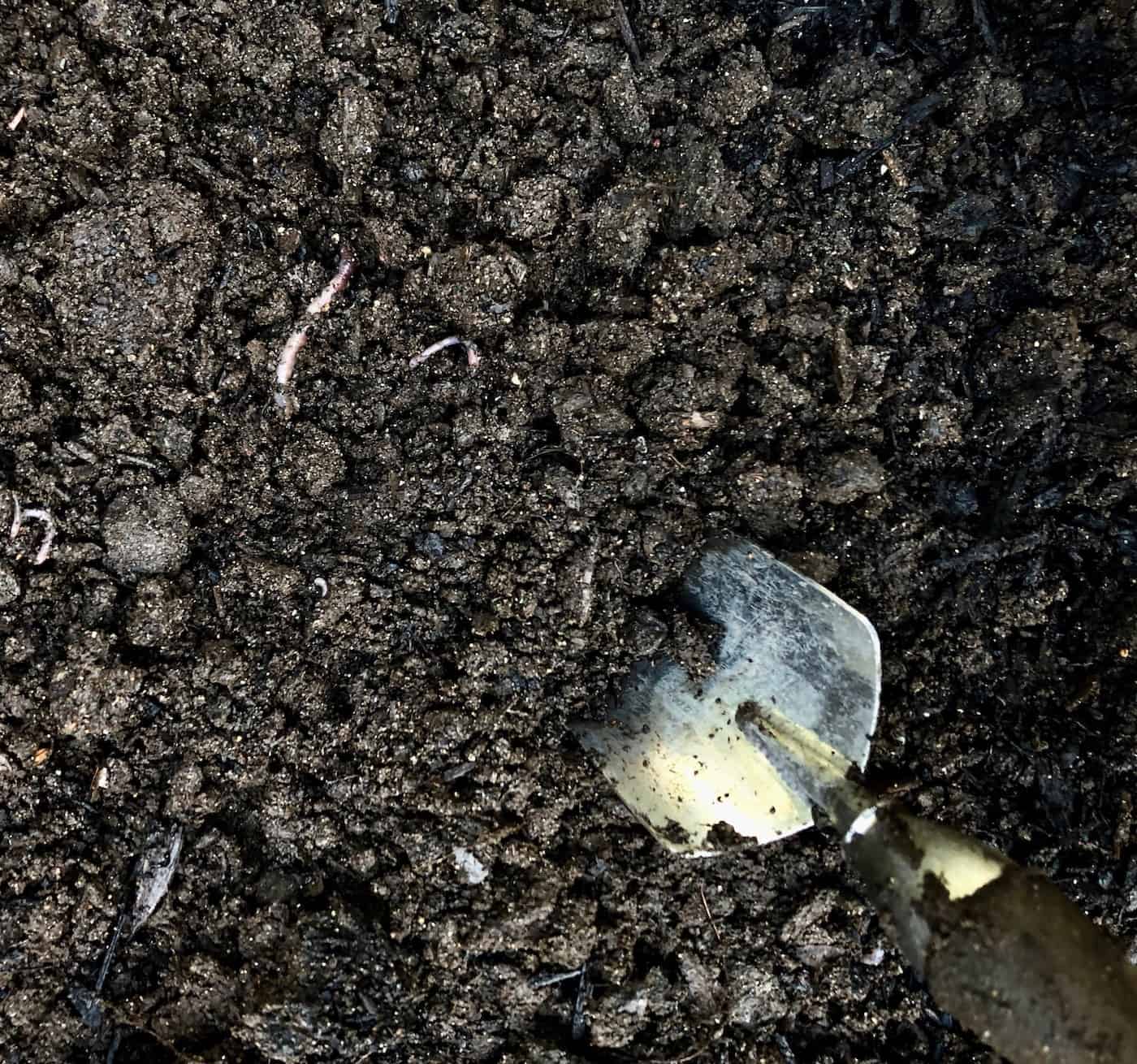
But no one is out in the forest fertilizing “nature”
But do plants really NEED added mineral fertilizer? Things are growing just fine out in the forest without our help, thank you very much. No one is out there dutifully helping wild plants survive with jugs of Miracle-Gro or truckloads of composted steer manure.
At this point, all I can think of is that Oval Office scene from Idiocracy… “Brawndo: It’s got what plants crave! It’s got electrolytes!”. Facepalm. Ask WHY.
On a less ridiculous note, it’s helpful to remember WHY we are adding any kind of fertilizer in the first place. Plants just need a bit of soil, water, and light. We don’t need to be routinely adding fertilizer to our landscape plants. The focus should be on preventing nutrient deficiencies rather than on maximizing production. Save the fertilizer for farmers growing giant fields of crops.
Follow the trends of mother nature instead of the trends of industrial farming. Making your own homemade compost is a great way to emulate nature while you give it just a tiny bit of a human boost. Organic fertilizer is great, but it should only be used if truly required. Get a soil test done!
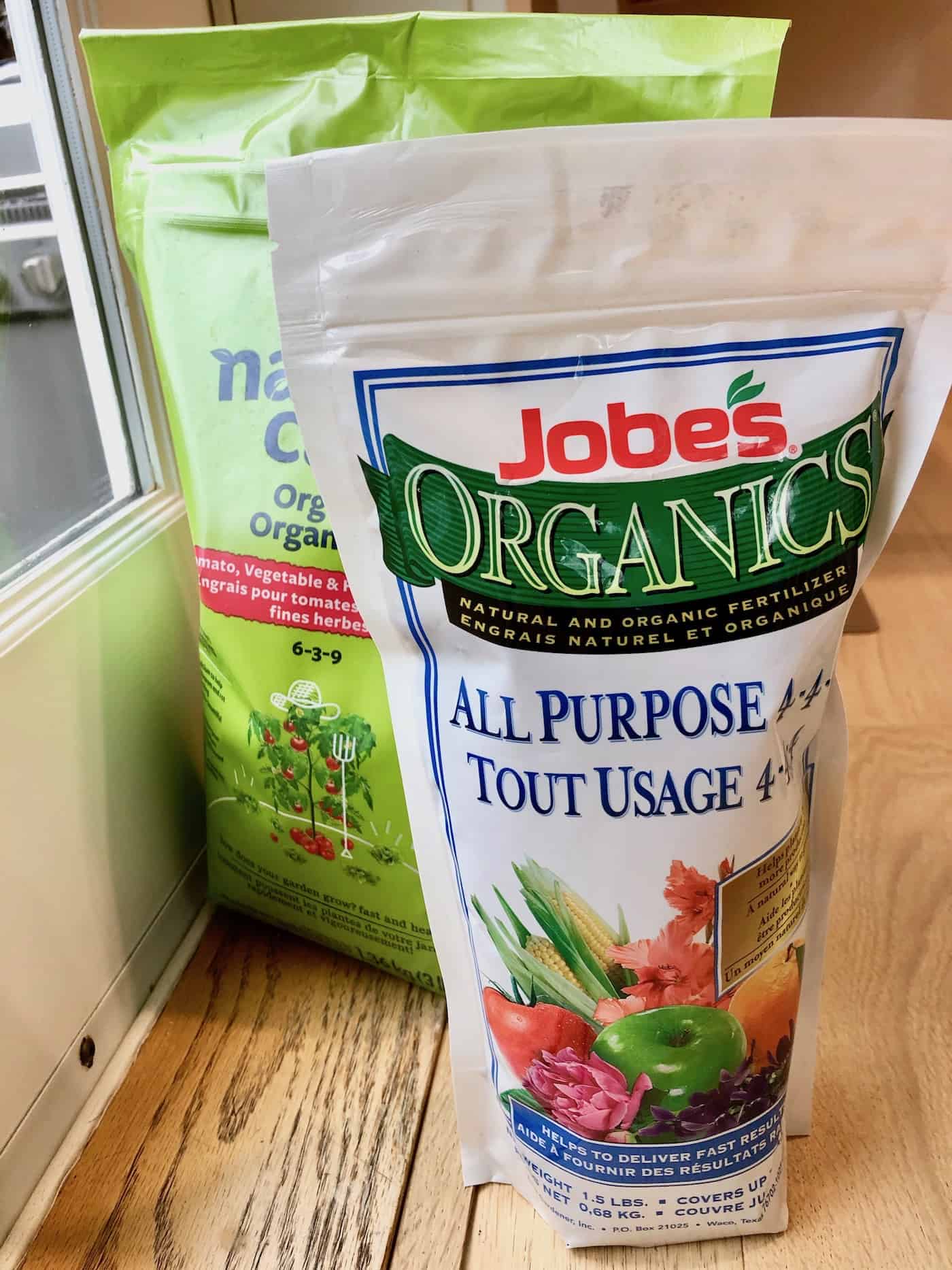
Organic fertilizer products
Fortunately, there are some fantastic organic fertilizers out there. Natural fertilizers are available as powder, pellets, spikes, liquid concentrate, and in granular form.
Here are some great organic fertilizers. But remember, just because they’re good products does not necessarily mean your garden needs them! Figure out what your garden needs. THEN feed it what it’s truly hungry for. Anything else is effective marketing.
“Nobody can tell you what your soil really needs without referring to a soil test conducted by an analytical laboratory.”
Fertilizing the Vegetable Garden, Colorado State University Extension
Organic all-purpose fertilizer
Shopping for a good organic all-purpose fertilizer gets more fascinating every year as more and more offerings become available. Since the most common soil macronutrient deficiency is nitrogen, a good all-purpose fertilizer will contain more nitrogen than the other two macronutrients. Most good all-purpose blends will also have a low amount of phosphorus due to the limited nature of this element and the potential for water pollution.
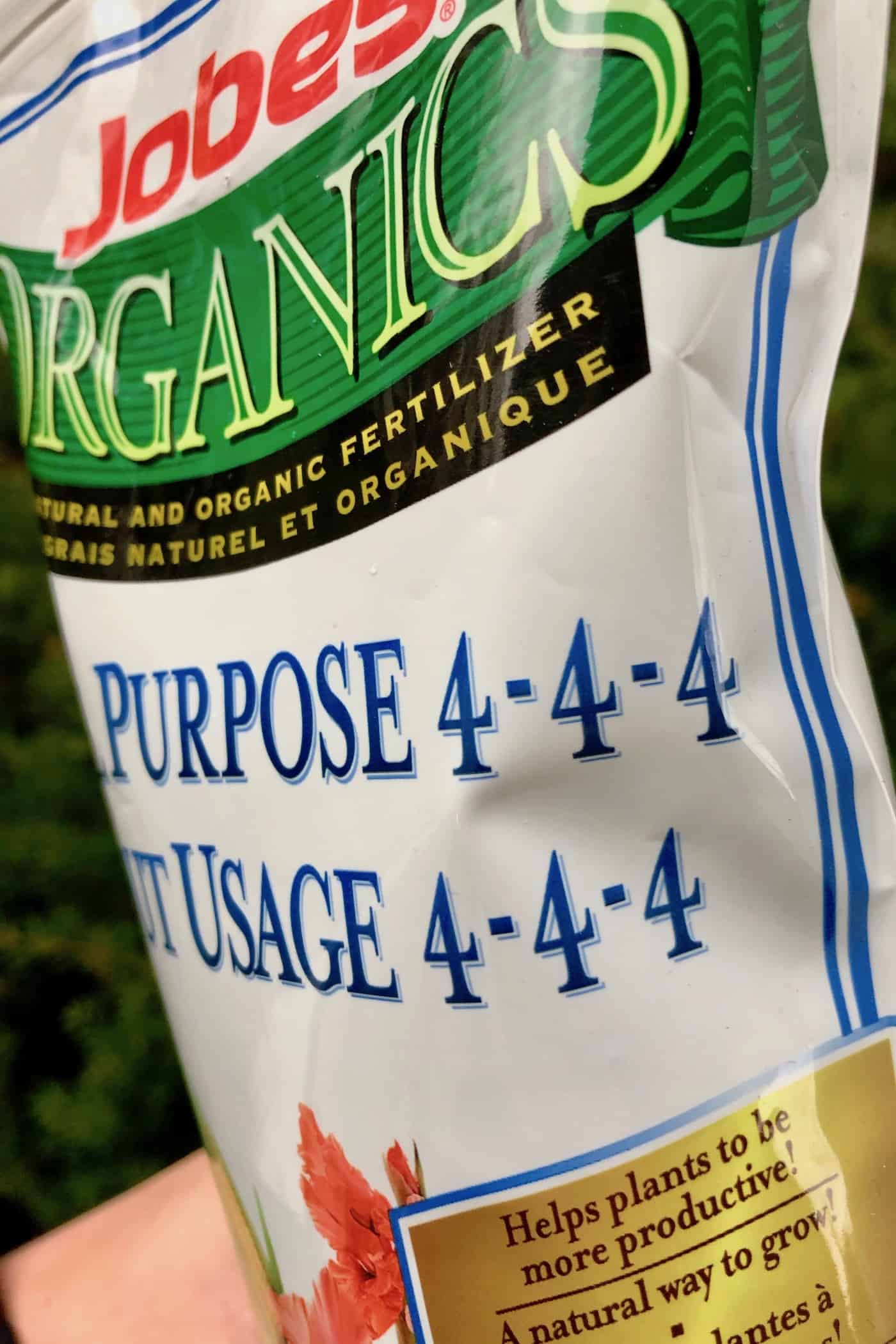
What about NPK for all-purpose fertilizer? Where’s the organic 10-10-10?
A fertilizer certainly does not need to have equal NPK numbers, such as 10-10-10, to be “balanced” or “all-purpose”. Gardening expert Mike McGrath notes “No plant uses those three nutrients in equal amounts.” He refers to even-numbered fertilizer ratios as “bogus” (Source – Gardens Alive).
Mike provides the following advice when considering the best NPK value of fertilizers for plants in general:
“The three numbers (commonly referred to as “N-P-K”) that appear on the label of every packaged fertilizer represent the three main plant nutrients: Nitrogen, Phosphorus and Potassium (which is sometimes called ‘Potash’). Studies have found that the ideal ratio of those nutrients for flowering plants is 3-1-2. (That’s 3% nitrogen, 1% phosphorus & 2% potassium.) So look for that ratio on the label of packaged fertilizers; anything close to a 3-1-2, a 6-2-4 or a 9-3-6 should be ideal. (Beware higher numbers—that’s the realm of chemical salts.)”
Mike McGrath, Fertilizer 101, Gardens Alive
So, just remember that 10-10-10 is more based on marketing than on botany. Even organic Miracle-Gro does not have an equal NPK ratio.
Organic fertilizer for tomatoes
Organic fertilizer for tomatoes (and for most leafy green flowering plants) is all about balance. The fertilizer needs enough nitrogen to prevent nitrogen deficiency, but not so much that the plant is all leaves and no fruit. Leafy green flowering plants like tomatoes are also heavy feeders and may respond well to supplementation with nutrients beyond NPK. For instance, many tomato fertilizers contain calcium to add flavor, regulate water, minimize cracking, and prevent blossom end rot.
“When an excess amount of nitrogen is applied to fruit crops such as tomatoes and squash, it is common to have all vines and no fruit.”
Fertilizing the Vegetable Garden, Colorado State University
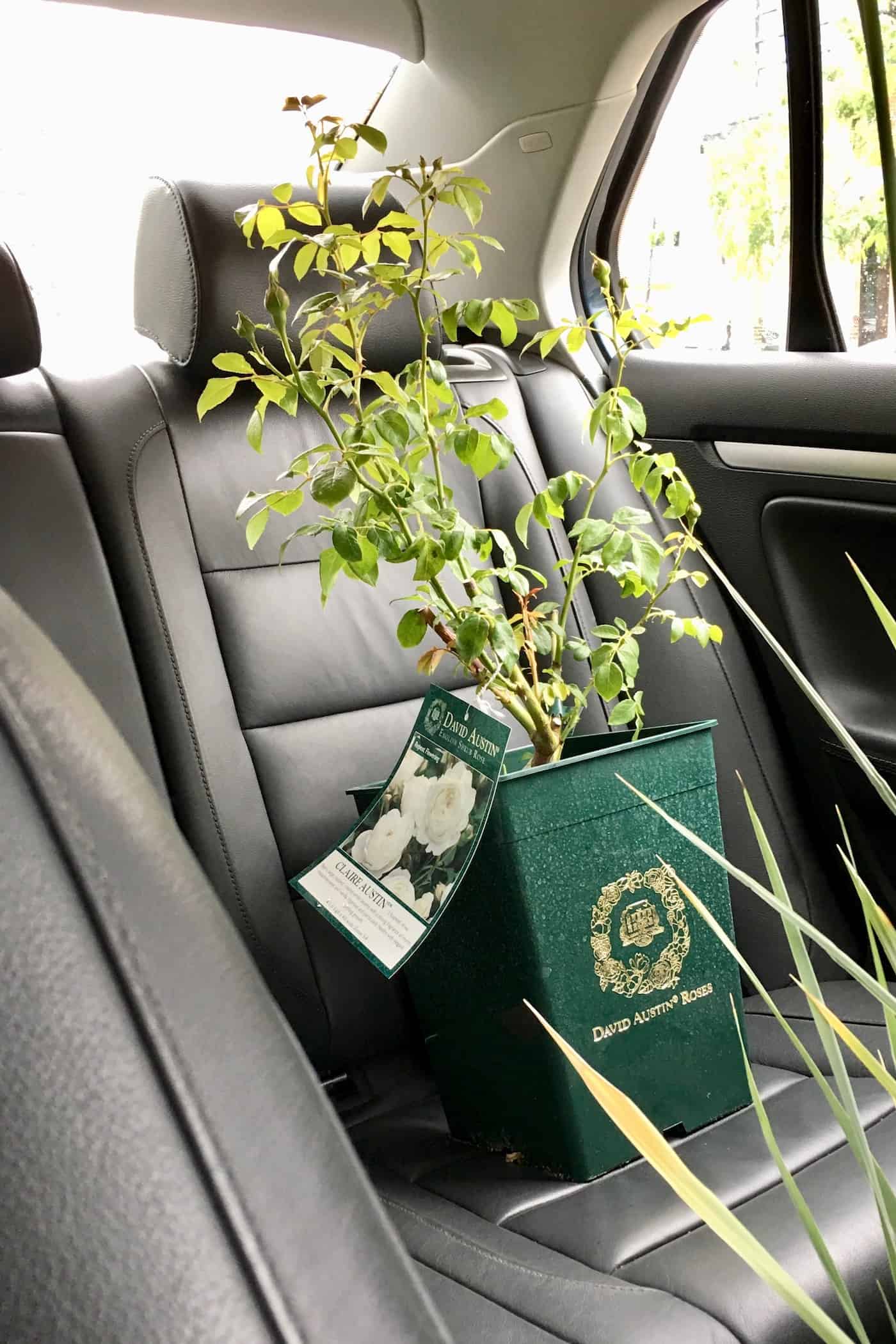
Organic flower fertilizer
Homemade compost is my favorite fertilizer for my perennial flowers. An inch of leaf compost in the spring is all I really need. My annuals tend to do fine with the organic fertilizer in the potting soil (which can last long enough for a short growing season).
In sandier soil or nutrient-deficient soil, light fertilization may be in order. Do keep in mind that over-feeding is still bad! It’s not going to “boost” your garden. What you WILL get are leggy, tall plants that flop over when the flowers appear. I’ve had that happen, and it is no fun.
“Smart gardeners know that heavy fertilization of perennial garden plants leads to flopping over half-way through the season.”
Fertilizing Established Perennial Gardens – Feed ‘Em and Weep, Michigan State University, by Rebecca Finneran
Organic lawn fertilizer
Organic lawn fertilizer is all about nitrogen. Good organic lawn fertilizer will contain significant nitrogen. It’ll also contain little to no phosphorus due to the pollution risk and lack of any significant benefit. Lawn fertilizer with phosphorus is actually outlawed in some jurisdictions! So, look for a product with a healthy amount of organically-sourced nitrogen (rather than the synthetic nitrogen fertilizer produced using massive amounts of natural gas).
I wrote a whole article on organic lawn fertilizer earlier this year. It expands on this section. Check it out here: Organic Lawn Fertilizer – A Homeowner’s Guide
“When phosphorus is applied but not needed, it can kill off the symbiotic mycorrhizal-forming fungi required by the plant and reduce the vegetables’ ability to absorb iron and other micronutrients. Excess soil phosphorus also shuts down the plant’s ability to produce phytochelates, organic molecules produced by roots to increase its iron uptake.”
Fertilizing the Vegetable Garden, Colorado State University
